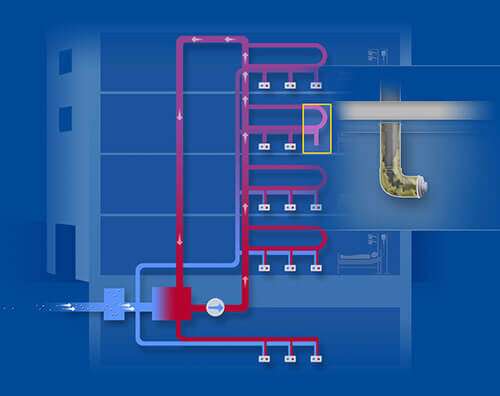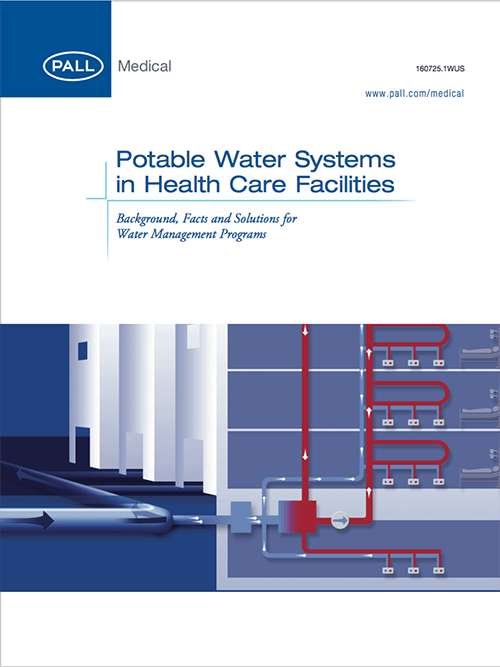Why is complete biofilm eradication by systemic treatments so difficult?
Water distribution systems in large buildings are frequently complex networks and can be up to 50 km in length. Dead ends, corroded pipes, low throughput, insufficient temperature below 131 °F (55 °C) in the hot water pipes and above 68 °F (20 °C) in the cold pipes contribute to biofilm formation and impede eradication of biofilm (54). Heat & Flush procedures (e.g. 10-20 minutes of simultaneous flushing of all outlets with water heated to > 158 °F (> 70 °C) may have only short term effects (55). Legionella strains may even become heat resistant after thermal treatment over a long time (20). Moreover, the thermophilic Legionella community, including L. pneumophila, is able to grow in hot water systems above 122 °F (50 °C) (56). Thermal procedures can result in warming up of cold water (26, 57, 58), when both hot and cold water pipes are located in the same duct increasing the risk of biofilm growth in cold water. Chemical treatments are bactericidal to free floating bacteria but have limited effects on biofilm and may create hazardous byproducts during use (10, 55, 59, 60). Therefore, areas with vulnerable users may require additional protection (e.g. 0.2 μm point-of-use water filtration) to minimize risk of transmission of waterborne pathogens.
Image: Water systems in hospitals can contain corroded pipes and dead ends which cannot be reached by systemic disinfection. Bacteria can be released to recolonize the system after disinfection. Construction work may also cause biofilm release into the water network.






